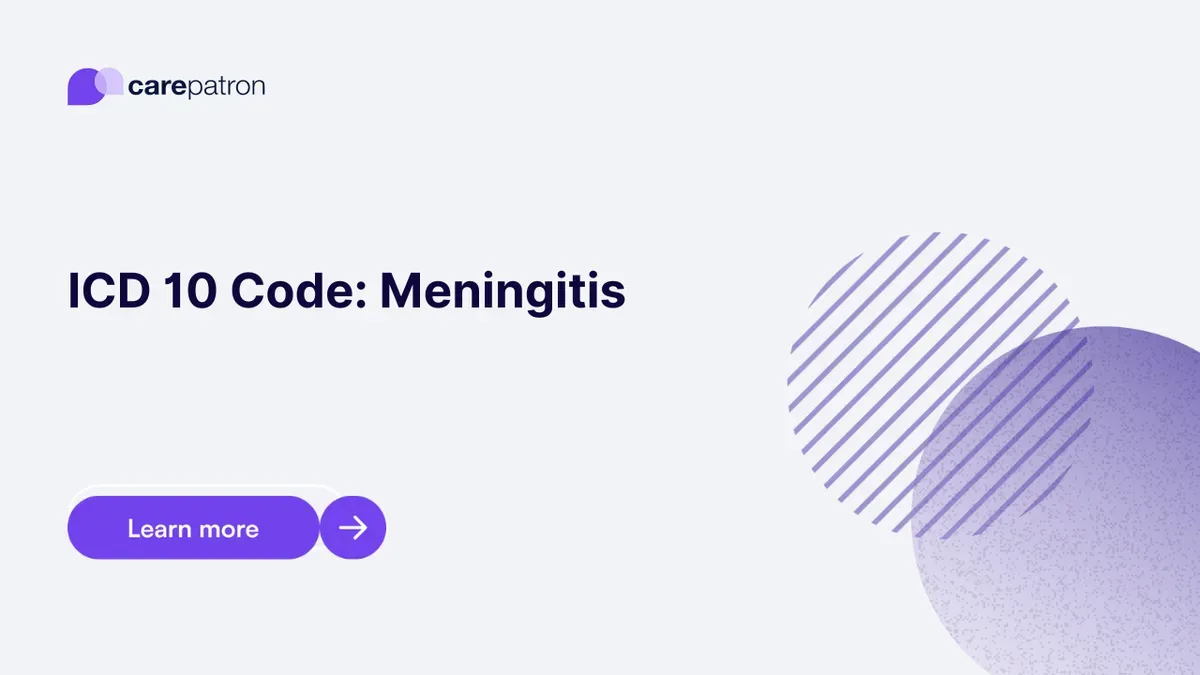
Meningitis ICD-10-CM Codes
Read this short guide to learn about Meningitis ICD codes you can use.
Use Code
Commonly asked questions
The ones listed above are primarily bacterial meningitis. Bacterial meningitis is the most common type of meningitis. Other types include viral meningitis, fungal meningitis, parasitic meningitis, and drug-induced aseptic meningitis. Meningitis can either be acute (it suddenly emerges and the symptoms are severe) or chronic (if it lasts longer than a month).
Brain damage is one example. Another would be sepsis, which, if not addressed immediately, can damage tissues, blood vessels, and organs, all of which could lead to death. If you notice that a patient has rashes on their skin, that’s a sign of sepsis caused by bacterial meningitis.
That depends on the type of meningitis that they’re dealing with. For bacterial meningitis, antibiotics will be used. If it’s viral, then antivirals will be used. If it’s fungal, then antifungals will be used.
Since meningitis is an inflammation, professionals will also administer corticosteroids to treat the inflammation.
To reduce the risk of getting meningitis, at least the bacterial and viral kinds, it’s best to recommend to your patient to get vaccinated.
EHR and practice management software
Get started for free
*No credit card required
Free
$0/usd
Unlimited clients
Telehealth
1GB of storage
Client portal text
Automated billing and online payments
